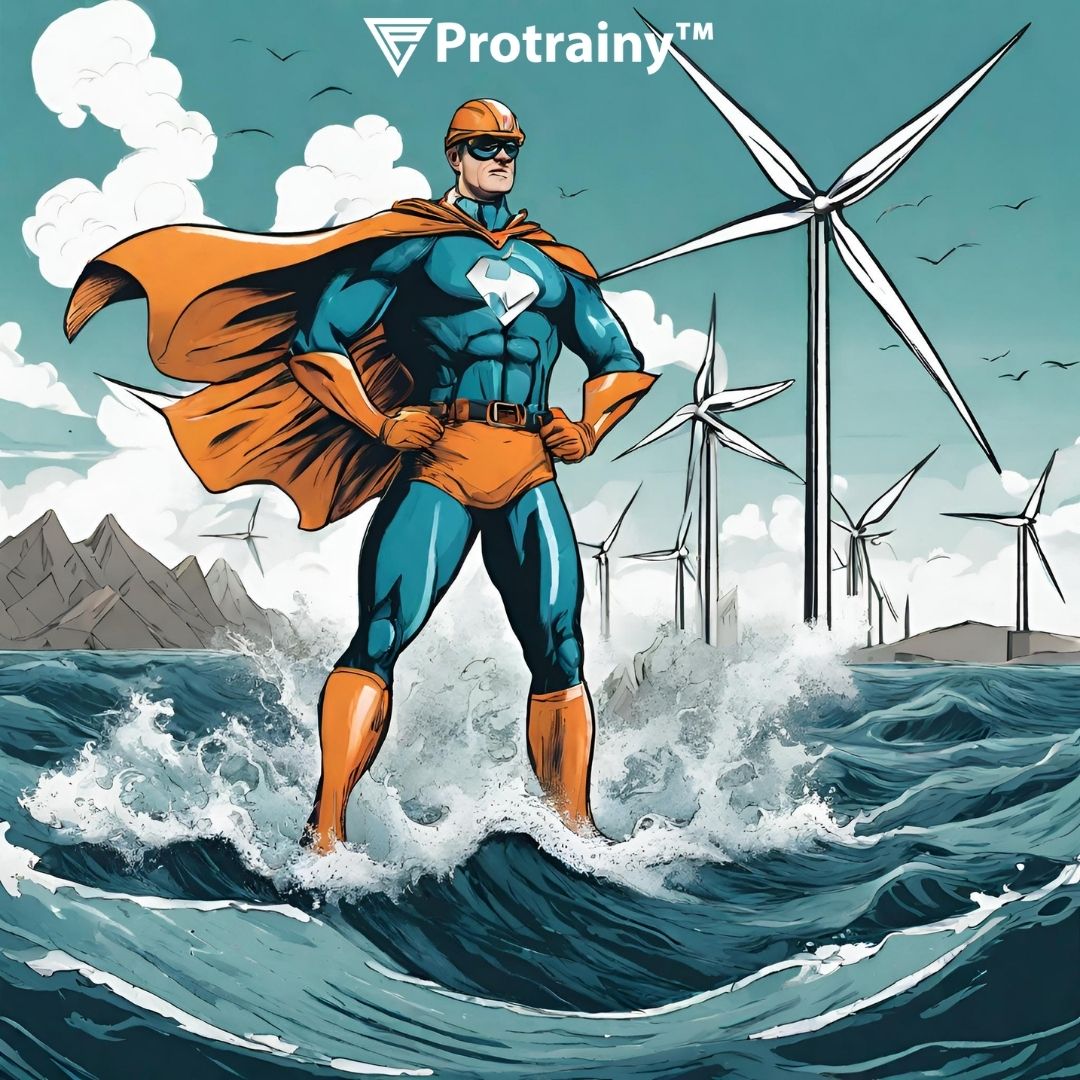Blogs
- Home
- Blogs
Harnessing the Winds of Change: Engineering Offshore Wind Farms in Deep Waters
Protrainy | Sept. 2, 2023, 12:41 p.m.

Introduction:
As the world grapples with the urgent need to transition to cleaner energy sources, offshore wind farms have emerged as a promising solution. These mammoth structures, equipped with towering turbines, harness the power of the wind to generate electricity. However, engineering offshore wind farms in deep waters presents a unique set of challenges and opportunities. In this blog, we'll embark on a journey into the realm of offshore wind farms, exploring the real-world challenges faced by engineers, the innovative solutions they employ, and the transformative impact these wind farms have on our energy landscape.
Setting Sail: The Rise of Offshore Wind Power
Offshore wind farms have captured the imagination of renewable energy enthusiasts and engineers alike. Positioned in the wind-rich environment of open waters, these farms boast the potential to generate vast amounts of clean electricity, reducing our reliance on fossil fuels and mitigating the impacts of climate change.
At their core, offshore wind farms consist of clusters of wind turbines anchored to the seabed. The primary components include towering wind turbines, support structures, subsea cables, and offshore substations. These elements work in concert to capture, transform, and transmit wind energy to the onshore grid. The allure of deep waters comes with a host of engineering challenges. Unlike traditional shallow-water wind farms, offshore installations in deep waters must contend with deeper seabeds, more challenging environmental conditions, and a need for increased structural integrity. One innovative solution for deep-water wind farms is the use of floating wind turbines. These massive structures are tethered to the seabed using mooring lines, allowing them to remain stable despite the ocean's depth and turbulence. Floating wind turbines open up new possibilities for offshore wind energy in deep waters.
Transmitting electricity from deep-water wind turbines to the onshore grid requires subsea cables. Engineers must design and install these cables to withstand the harsh marine environment, including saltwater corrosion and potential damage from ships and marine life. Offshore wind farms must coexist harmoniously with marine ecosystems. Environmental impact assessments and mitigation measures are critical to minimizing harm to marine life, including birds, fish, and other aquatic organisms. Offshore wind farms often find themselves in hurricane-prone regions. Engineers must design turbines and support structures to withstand the intense winds, waves, and storm surges associated with these powerful storms.
Hywind Scotland, located off the coast of Peterhead, Scotland, is the world's first floating wind farm. Comprising five floating turbines, this project demonstrates the viability of harnessing wind energy in deep waters. The floating platforms stabilize the turbines in water depths of up to 129 meters, opening new opportunities for offshore wind energy expansion.
Impact and Beyond: A Clean Energy Horizon
The impact of offshore wind farms in deep waters extends far beyond their capacity to generate electricity. These farms have the potential to reshape the energy landscape, reducing greenhouse gas emissions, creating jobs, and enhancing energy security. Moreover, they serve as beacons of technological innovation and environmental stewardship.
Conclusion: Riding the Wind to a Sustainable Future
Offshore wind farms in deep waters are emblematic of our commitment to a cleaner, more sustainable energy future. By overcoming engineering challenges and harnessing the power of the wind in the open ocean, we take significant strides towards reducing our carbon footprint and securing a brighter future for generations to come. These offshore wind farms are not just structures; they are symbols of our dedication to preserving the planet and embracing the boundless potential of renewable energy. In the face of climate change, they stand as monuments to human ingenuity and the limitless power of the wind.
